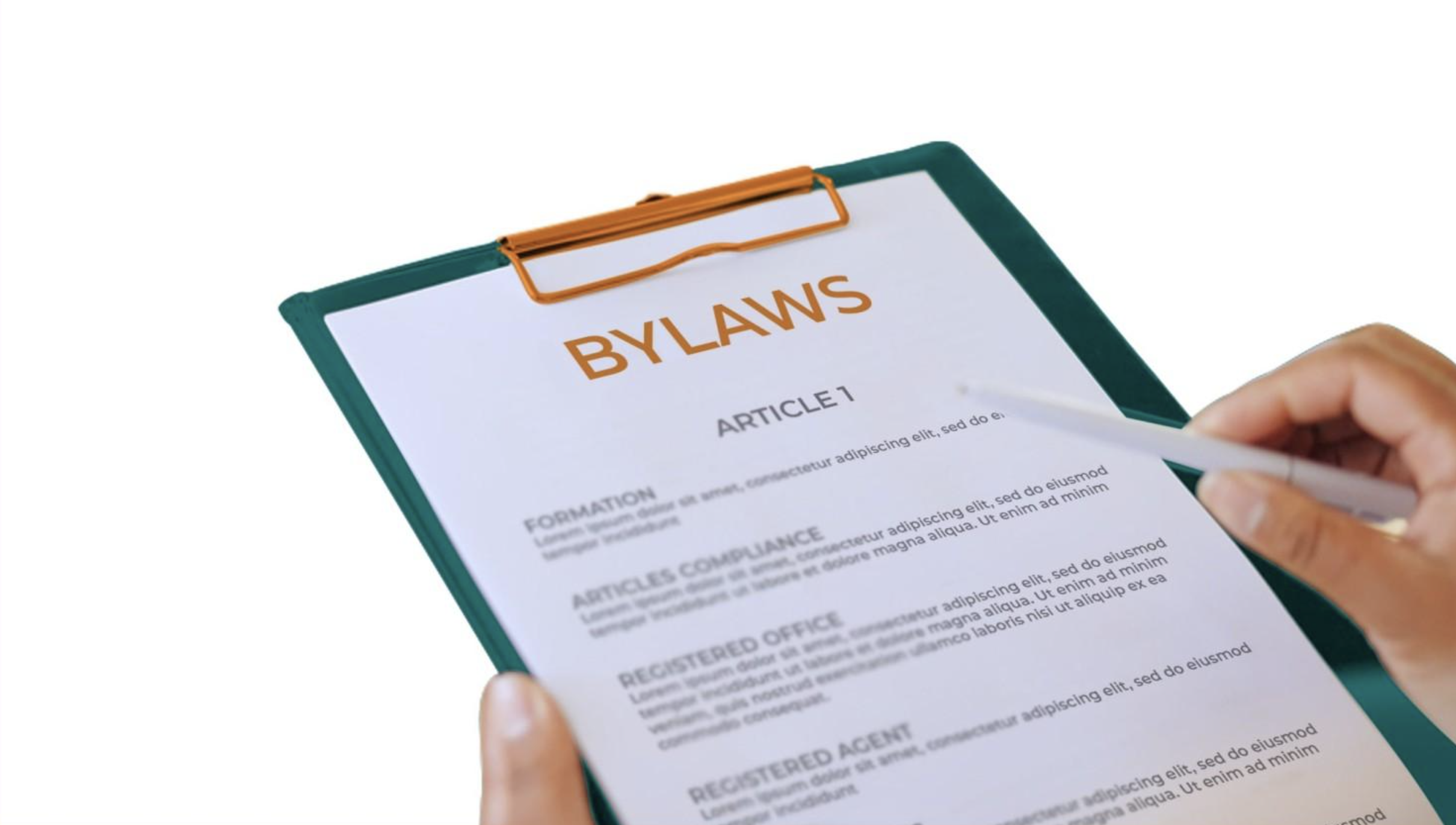
How to Update Your Booster Club Bylaws: The Smart Guide to Legal Compliance
Your booster club bylaws were written in 2005. Since then, you've added online payments, virtual meetings became essential, and new IRS requirements took effect. But your governing documents still reference "checks only" for dues and require all meetings to be in person. Sound like it's time for an update?
Updating booster club bylaws isn't just administrative housekeeping – it's essential legal maintenance that keeps your organization compliant, effective, and protected. When your bylaws don't match your current reality, you risk governance problems, compliance issues, and operational confusion.
Let's walk through exactly how to update your booster club bylaws the right way, ensuring legal compliance while building a stronger organizational foundation!
Why Booster Club Bylaws Need Regular Updates
The Legal Reality
Your bylaws are a legal document that defines how your organization must operate. The IRS can impose fines of up to $105 per day (capped at $54,500 per return) for late or incomplete filings, and many compliance failures stem from outdated internal governance documents.
Common Triggers for Updates
Smart booster clubs review their bylaws annually and update them when:
Operational Changes:
- Adding online payment systems and digital communications
- Implementing virtual or hybrid meeting capabilities
- Changing fundraising methods or revenue streams
- Expanding programs or geographic scope
Governance Evolution:
- Adjusting board size as the organization grows
- Modifying officer roles and responsibilities
- Updating committee structures and authority
- Changing membership requirements or benefits
Legal Compliance:
- New state nonprofit law requirements
- Updated IRS regulations for 501(c)(3) organizations
- School district policy changes affecting booster clubs
- Changes in banking or financial reporting requirements
Step-by-Step Bylaw Amendment Process
Phase 1: Assessment and Planning (Month 1)
Review Current Bylaws Start by thoroughly reading your existing bylaws – many board members discover they've never actually reviewed the complete document! Identify sections that no longer match your current operations.
Identify Specific Issues Document exactly what needs to change and why. Common areas requiring updates include:
- Meeting procedures and quorum requirements
- Officer election processes and terms
- Membership categories and dues structures
- Financial management and approval processes
- Committee authority and reporting requirements
Check State Law Compliance Before drafting any changes, research your state's current nonprofit corporation laws to ensure proposed amendments comply with legal requirements.
Phase 2: Legal Research and Drafting (Month 2)
Understand Amendment Authority Your current bylaws should specify who can propose amendments (usually board members) and what voting requirements apply. If your bylaws are silent, follow your state's nonprofit statute requirements.
Draft Clear, Precise Language Avoid legal jargon and ambiguous wording. Each amendment should:
- Address a specific operational need
- Use clear, actionable language
- Avoid conflicts with other bylaw provisions
- Comply with state and federal requirements
Consider Domino Effects Some changes affect multiple bylaw sections. For example, adding a new officer position impacts sections on:
- Total number of board members
- Officer duties and responsibilities
- Election procedures and timelines
- Committee assignments and authority
Phase 3: Professional Review and Board Preparation
Legal Counsel Consultation While not always required, consulting with a nonprofit attorney helps ensure your amendments:
- Comply with current state and federal regulations
- Use proper legal language and structure
- Avoid unintended consequences or conflicts
- Protect the organization's tax-exempt status
Board Education and Discussion Before the formal vote, educate board members about:
- The specific problems each amendment addresses
- How proposed changes improve operations
- Any potential risks or complications
- Implementation timelines and requirements
Phase 4: Formal Amendment Process
Proper Notice Requirements Most bylaws require advance notice of proposed amendments, typically 10-30 days. Your notice must include:
- Exact wording of proposed changes
- Current bylaw language being modified
- Name of the person/committee proposing changes
- Rationale for the proposed amendments
- Date and location of the amendment vote
Voting and Documentation Follow your bylaws' voting requirements exactly:
- Ensure proper quorum is present
- Use formal motions and voting procedures
- Document the vote count (even if unanimous)
- Record the outcome in official meeting minutes
- File signed copies with your corporate records
Legal Compliance and Reporting Requirements
State Agency Notifications
Depending on your state and the type of amendments, you may need to:
- File updated bylaws with the Secretary of State
- Report changes in annual nonprofit filings
- Notify the state Attorney General (for mission changes)
- Update charitable organization registrations
Federal Reporting
Some bylaw changes require IRS notification:
- Significant mission or purpose modifications
- Changes affecting tax-exempt status eligibility
- Structural changes impacting organizational type
- Updates to dissolution or asset distribution clauses
Best Practices for Effective Bylaw Management
Keep Bylaws Strategic, Not Tactical
Your bylaws should address high-level governance issues, not day-to-day operational procedures. Think "Constitution," not "employee handbook."
Include in Bylaws:
- Board structure and officer roles
- Member rights and responsibilities
- Meeting requirements and voting procedures
- Amendment processes and legal compliance
Keep in Separate Policies:
- Detailed financial procedures
- Event planning protocols
- Communication guidelines
- Volunteer management procedures
Build in Flexibility
Avoid overly restrictive language that handcuffs future boards. For example, instead of "meetings occur the first Monday of each month," use "meetings occur monthly as scheduled by the board."
Annual Review Process
Establish a regular review schedule:
- Assign bylaw review to a specific committee or officer
- Include bylaw compliance in board orientation
- Review proposed changes during board retreats
- Update bylaws proactively, not reactively
Common Pitfalls to Avoid
Copying Other Organizations
Never copy another club's bylaws – they may not comply with your state's laws or fit your organization's specific needs.
Ignoring Implementation Impact
Consider how changes affect current board members, ongoing projects, and operational procedures. Plan transition strategies for significant modifications.
Skipping Professional Review
Complex amendments affecting governance structure, membership rights, or tax-exempt status should always be reviewed by qualified legal counsel.
Technology Tools for Bylaw Management
Modern booster clubs use digital tools to streamline bylaw management:
Document Management: Cloud-based systems that maintain current versions, track changes, and provide board access
Version Control: Systems that preserve amendment history and ensure everyone works from current documents
Compliance Tracking: Platforms that monitor filing deadlines and regulatory requirements
Board Communication: Tools that facilitate amendment discussion and voting processes
Your Bylaw Update Action Plan
Immediate Steps (This Month)
- Locate and read your current bylaws completely
- Identify operational practices not covered by current bylaws
- Document specific problems requiring amendments
- Research your state's nonprofit law requirements
Short-Term Implementation (Next 3 Months)
- Draft proposed amendments with clear rationales
- Consult with nonprofit legal counsel if needed
- Present amendments to board for discussion and feedback
- Schedule formal voting following proper notice requirements
Long-Term Maintenance (Ongoing)
- Establish annual bylaw review procedures
- Train new board members on bylaw compliance
- Monitor regulatory changes affecting nonprofit governance
- Update related policies and procedures to align with bylaw changes
The Bottom Line: Bylaws as Your Legal Foundation
Updated, compliant bylaws aren't just paperwork – they're your organization's legal foundation that protects board members, ensures operational clarity, and maintains tax-exempt status. Regular updates keep your booster club legally compliant while adapting to changing needs and circumstances.
Don't wait until compliance problems arise. Proactive bylaw maintenance protects your organization, clarifies decision-making authority, and creates the stable governance framework your booster club needs to thrive.
Remember: your bylaws should serve your mission, not obstruct it. When properly updated and maintained, they become powerful tools that enable effective governance and sustainable growth!
Simplify Bylaw Compliance with BoosterHub
Managing bylaw updates and ensuring ongoing compliance doesn't have to be overwhelming. BoosterHub's comprehensive platform helps track governance requirements and maintain compliance.
Simplify Communications from App to Website




.png)